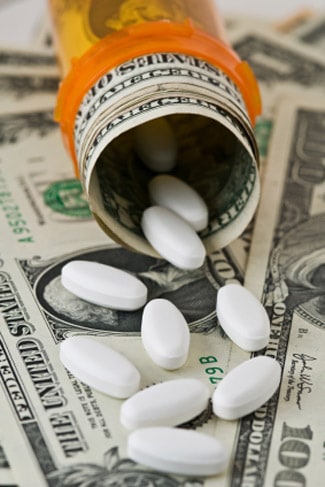Nine ways to save money on prescription drugs
Prescription drugs offer the highest opportunity for cost savings when it comes to health care, according to the 2010 Healthcare Transparency Index, issued by change:healthcare. The site provides consumers with information about cost trends in health care.
According to the index, costs for commonly prescribed drugs can vary greatly, even among generic versions. Walmart, Target, Kroger, CVS and Walgreens top the list of chains with the widest prescription cost discrepancies for both brand-name and generic drugs.
If you’re concerned about the amount of money you’re paying for prescription drugs, or simply want to evaluate your costs, now is a great time to do so. There’s more information available than ever before, and plenty of ways to trim the amount you’re spending on medication.
Here are nine strategies for reducing your prescription drug costs.
1.Look into drug discount cards.

For medications not covered by your insurance, consider a drug discount card, says Dr. Richard Sagall, president of NeedyMeds.org, a nonprofit that offers information on programs to reduce costs on medication and health care. NeedyMeds.org offers cards with discounts of up to 75 percent on prescription drugs, over-the-counter drugs and prescribed medical supplies. It also covers pet prescription drugs purchased atpharmacy.
2.Comparison shop.
Pharmacies are just like any other retailer in that they set their own prices, says Colleen Higgs, president of Ramsell Pharmacy Solutions in Oakland, Calif. Before filling a prescription, it pays to compare costs; you often can do that without leaving your home. By law, pharmacies are required to give you a price quote over the phone.
3. Ask for a match.
Some pharmacies will match the price of competitors — something that has helped Cindy Holtzman of Marietta, Ga., save a significant amount of money.
“My personal insurance does not have any prescription coverage,” she says. “So I go to Costco.com and look up their price. My grocery store pharmacy matches it.”
Holtzman, a health insurance agent and medical billing advocate, once needed a prescription that cost $199 a month. By searching around, she was able to get it for $35.
A few places to compare pharmacy prices online: www.costco.com, www.pharmacychecker.com, and www.destinationrx.com.
4. Request samples.
“When my oldest child was taking a daily medication, her pediatrician gave us samples whenever possible,” says Heather Sokol, founder of Inexpensively LLC, a national network of frugal bloggers.By simply asking, Sokol regularly left the office with a month’s worth of medication at no charge.
5. Cut it up.
Requesting a higher-strength medication and taking half of the dose can help save cash, says Carole Holden, founder of Gelmtree Advertising in Florida. Holden’s husband needs 10 milligrams of a certain medication each day. Their doctor prescribed 20 milligram tablets, which Holden’s husband then cuts in half. The cost of a refill is the same, but the pills last 60 days instead of 30.
This procedure, known as pill splitting, can work in certain situations, says Higgs, the pharmacist. Not all medications have the same effect when split, however, so check first with the doctor prescribing your medication and then with your pharmacist before cutting a pill.
6. Watch for freebies.
Some pharmacies and grocery stores offer free generic antibiotics. Others give gift cards with a new or transferred prescription. With these, you still may have to pay for the medications, but you’ll get a certain amount to spend on your next grocery or over-the-counter purchase.
7. Talk to your doctor.
It’s important for patients to tell doctors that they can’t afford certain medications, Sagall says. Your physician may be able to help you come up with less expensive or generic options.
If you’re taking a number of medications, evaluate them periodically. Doctors might start patients on drugs for conditions such as diabetes or hypertension and never look back, Sagall says. If the medications help bring your condition under control, there’s a chance you may not need to continue taking all of them. Ask whether one or more can be eliminated.
8. Look into patient assistance programs.
These programs are provided by pharmaceutical companies for people who cannot afford to buy medication. And while pharmaceutical manufacturers provide these programs for many expensive medications, they don’t always hunt for customers, according to Higgs.
To learn whether a patient assistance program will work for you, find the manufacturer of the medication your doctor prescribes, then visit that manufacturer’s website to learn about its patient assistance offerings. For more information, visit www.rxassist.org.
9. Mail it in.
While it won’t work for medications that you need immediately (such as antibiotics), using a mail-order pharmacy can offer significant benefits over the long run. Typically, consumers can receive a three-month supply of medication through these programs for the cost of just one or two months.
